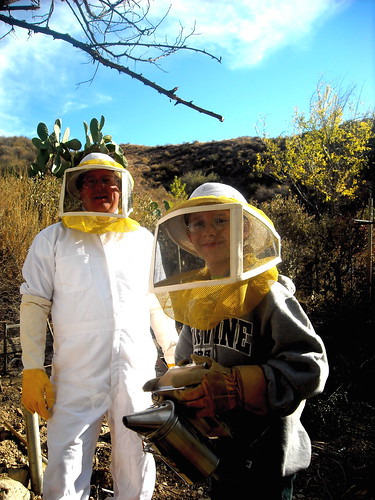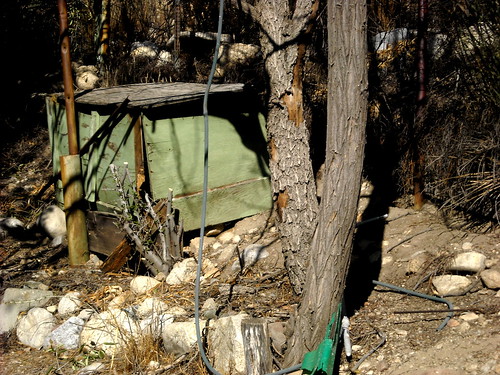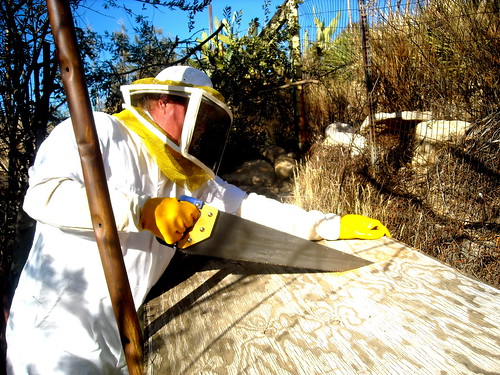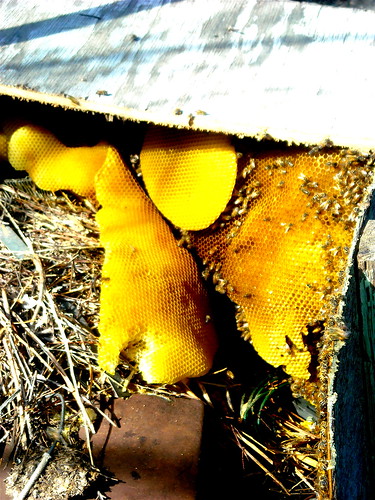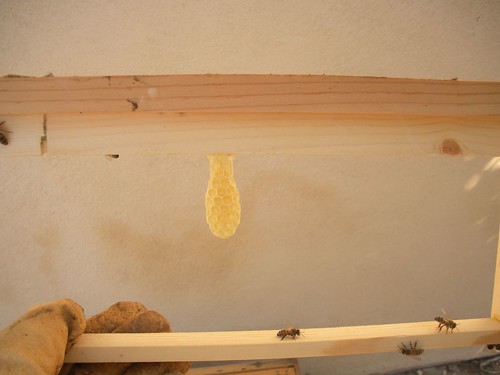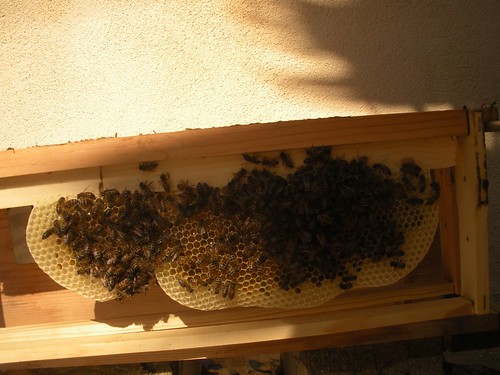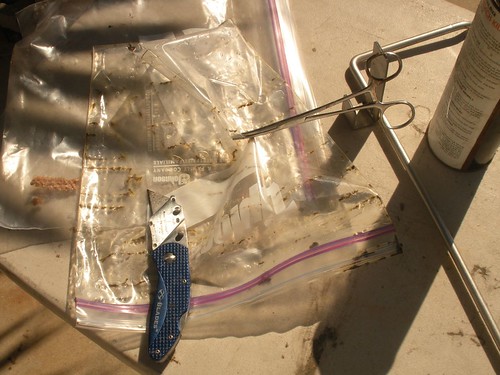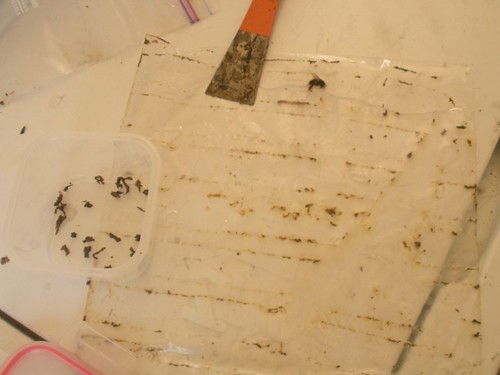
Today was the day but first I needed some waffles cooked on my Cast Iron. This is not bee related, I just love my Cast Iron and waffles in the morning.

We got to the site and Steve found a lonesome drone walking around the ground. He was symptomatic of this hive. They were extremely quiet and easy to work with. No stings at all except at the very end. I figure that lone bee was annoyed with being sucked up by the bee vac and wanted some revenge. The home owner said no one had ever been stung by these bees,
>

This was our target. It looked like a large swam but the bees had been living there for 3-4 months. They did not sting anyone but they scared people. This tree was right next to the sidewalk.
It was a nice rounded V-shaped hive.
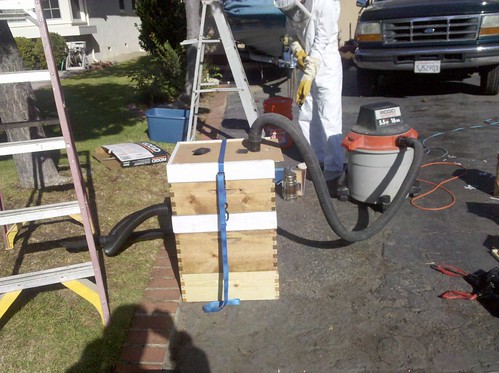
Steve hooked up his weapon of choice, the mighty Bee Vac. The two white pieces and the hive body between are part of the Bee Vac, The other two hive boxes were just to give it a little height and allow us to reach the bees better. This is a 5HP Sears shop vac. It sucks the bees in the bottom white section. The suction pulls through the middle hive box ot the top white piece which is closed off with a screen. There are some bee losses with this but it is much better than the exterminator. We can adjust the air pressure of the Bee Vac so the bees are not slammed into the hose or hive. A high percent of the bees do survive.

We were well supplied with empty hive boxes, nuc's and spare frames. The Home Depot orange buckets make good storage containers for honey and brood comb as it is removed.

Steve did most of the bee collecting. The new beekeeper Ed Garcia was filming the event for posterity and jumping in to help when he could. The neighbors came over for a glance from time to time but most kept a good distance.
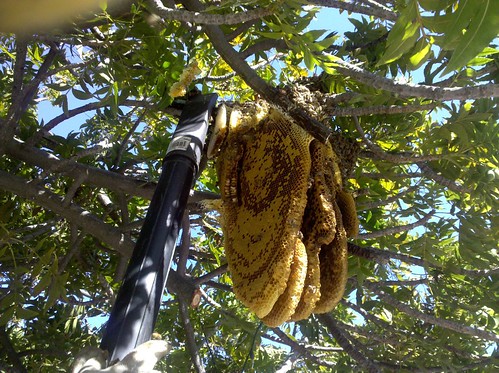
Slowly sucking in the bees the comb was revealed. There were 5-6 large comb sections fully entwined in the branches and some old Christmas tree wires. It was well secured and safe from all but the biggest winds. . As Steve removed the bees he took down the comb in as large sections as he could. With the branches coming in and out of the comb it was not easy to get big pieces. Steve takes great care to preserve the comb.
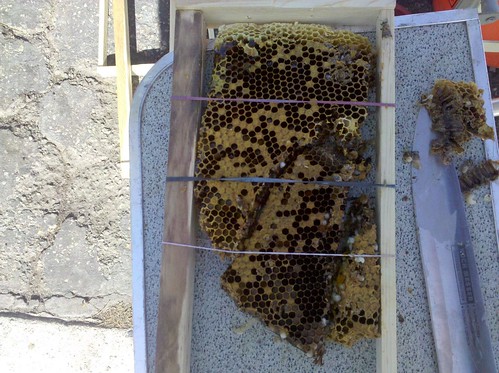

The comb that was clearly honey was placed in one bucket and brood comb into another. As ir came available I took the brood comb and cut it down to size to fit the empty frames. We ended up with 6 frames of brood that was set aside and later put into the large hive box which would be the base for the hive. Over time the bees will connect all the comb bits and pieces and seal it into the frame. When that is done they will bite though the rubber bands and toss them out of the hive.
Can't you hear the workers talking.. "Jane, it is your turn to bite through that rubber and not get killed! Good Luck! " (Girl name used on purpose, all working bees are females.)
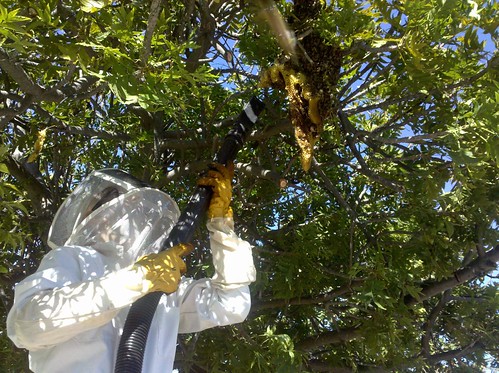
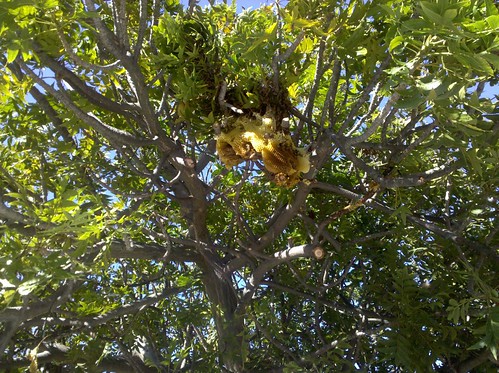
Between filming Ed was assisting Steve and up on the ladder sucking in bees and removing the last comb bits. As mentioned earlier, I am a ground sort of bee guy. Tall helps in getting to them but workers willing to stand on a ladder and use both hands to work are extremely helpful. A number of bees clustered on the branches but they were collected too. We did not see the queen but Steve is very methodical probably got her as he worked.
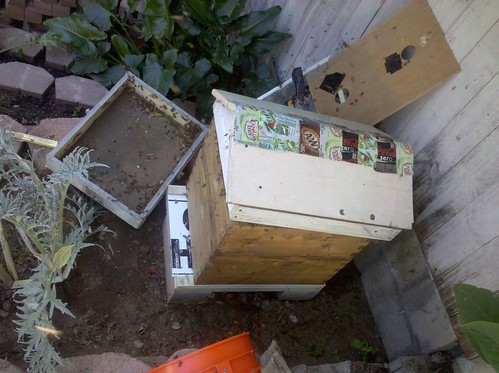
The bees are now at their new house. The bottom box contains the frames I filled with Brood Comb. The upper box is the one we collected the bees in and is filled with empty frames. There are still bees in the bottom piece off to the side of the hive , it is the bottom of the Bee Vac system . It will stay there for the day so the stragglers can crawl into the hive. They just want to find the queen. Ed's home-made lid works very well, it has plenty of space between the top and the frames. Steve was able to put the honey on top of the frames under the top so the bees have plenty to eat as they get used to their new home. Doing a methodical, non-fatal bee collection is not fast work. This job took about four hours with all of us working. It was a good way to start the day.
Ed will be editing down his work the next few days and it will show up on YouTube. When it does, you will find a link him.
